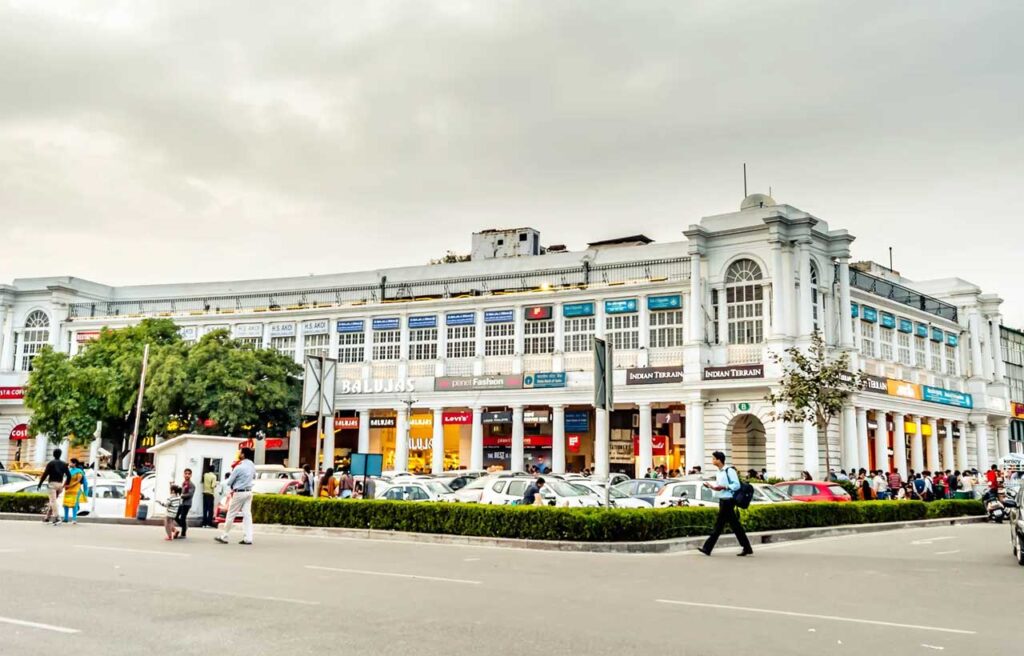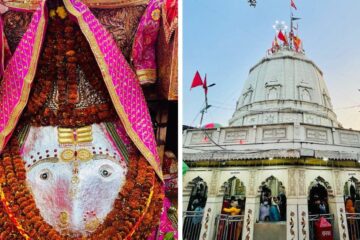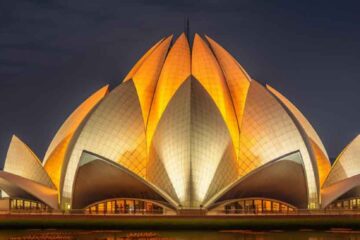Connaught Place

About Connaught Place, Delhi
Greetings from one of the largest financial and commercial markets in the world! Greetings from Connaught Place. Some people find Connaught Place delightful, while many find it attractive and beneficial for business. Connaught Place, sometimes abbreviated as CP, is the central business district of Delhi and is home to the global headquarters of many large companies. Although it is the main business district of Delhi, the city is still very proud of its history.
The centerpiece of Lutyens’ Delhi, CP, was named after Prince Arthur, 1st Duke of Connaught and Strathearn. Construction of the commercial market began in 1929 and ended in 1933.
Connaught Place market is built in the shape of a horseshoe, as the British believed that it could bring good luck to the shopkeepers as well as the shoppers. The market is divided into two circles: the inner circle and the outer circle. While the inner circle includes blocks A to F, the outer circle includes blocks G to P.
While CP is home to several important government buildings and commercial establishments, it is also a major retail destination featuring some of the best-known national and international brands.
Connaught Place Delhi Entry Fee
- N/A
Connaught Place Delhi Timings
| Day | Timing |
|---|---|
| Monday | 10:00 am – 8:30 pm |
| Tuesday | 10:00 am – 8:30 pm |
| Wedesday | 10:00 am – 8:30 pm |
| Thursday | 10:00 am – 8:30 pm |
| Friday | 10:00 am – 8:30 pm |
| Saturday | 10:00 am – 8:30 pm |
| Sunday | Closed / Holiday |
History of Connaught Place:
Looking at how Connaught Place has developed over the years, it is hard to imagine that the area was a hilly area before the CP was built. Boars and jackals lived there and Kikar trees covered the entire area. People from different parts of the city like Civil Lines and Kashmiri Gate used to come here for pheasant hunting.
There was a Hanuman temple there which was very popular. However, to prevent any accidents, people came in groups only on Tuesdays and Saturdays and left before evening. After the plan to build Connaught Place was made, people of nearby villages Jaisingh Pura, Madhoganj and Raja Ka Bazaar were ordered to vacate the area for the development of CP and its surrounding areas.
The displaced people were moved to a rocky area with trees and wild vegetation called Karol Bagh. Everything was destroyed except three buildings: Jantar Mantar, Hanuman Temple, and the Jain temple at Jaisinghpura.
Imperial India was to become a commercial area and the British took this very seriously. WH Nichols, the project’s primary architect, oversaw the construction of the CP, which was intended to serve as a central commercial district.
But midway through the project, Nicholls abandoned it, and Robert Tor Russell continued building the center plaza in the Classical style, taking inspiration from the European Renaissance. Russell served as the top architect of the Public Works Department in India.
Connaught Place was named after Prince Arthur, 1st Duke of Connaught (1850–1942), the third son of Queen Victoria and uncle of King George VI of England. According to the designers of the place, the Georgian architecture of Connaught Place was inspired by the Royal Crescent of Bath. Royal Crescent is a three-story, semi-circular building, but the architects of Connaught Place allowed only two levels.
As envisioned by the architects, the plan was to build residential complexes on the upper floors and commercial buildings on the lower levels. And finally, the CP took the form of a perfect circle. There are two concentric rings that make up this structure: an outer, middle, and inner circle. There are seven roads that lead to Central Park. According to the basic idea, the top of each block needs to be connected. However, the circle was divided to provide scale of space.
The administration had also suggested building a New Delhi Railway station in the circle, as the location was so ideal. After it was determined that the proposal was not viable, New Delhi Railway Station was built on land in the nearby Paharganj area.
Early days of Connaught Place:
At first, Connaught Place was mostly home to Kashmiri Gate merchants, including well-known brands like Galgotias, Cantar, and Snowwhite. Shops for luxury clothes, pianos, shoes, and artefacts were being set up, as were the homes of the rulers of most of the Indian princely states nearby.
Regal Cinema was one of the main attractions at that time. It was the first movie theater in Connaught Place and hosted some of the most famous ballets, musicals, theater productions, and other events. Later in 1938, the Rivoli and Odeon cinemas were established. At first, only Indian appetizers were available. But the plaza was filled with open eateries, including United Coffee House and Kwality, which were making their debuts in the industry.
The market was not much of an important factor. Connaught Place was introducing a culture that had greater influence. The first candy store in Connaught Place was Wenger’s, which is still in business. For many years, the Davico and Standard restaurants were highly sought-after dining venues with long wait times.
With the opening of The Imperial on Janpath (formerly known as Queen’s Route), Connaught Place got its first luxury hotel. The hotel became the most popular haunt for royalty and high-rolling business functions. It is important to note that the Imperial Hotel in Connaught was the venue for the meeting of Jawaharlal Nehru and Mohandas K. to discuss the partition of India and the establishment of Pakistan. It served as a meeting place for Gandhi, Muhammad Ali Jinnah, and Lord Mountbatten.
CP saw a decline in commerce during World War II and the independence movement. However, things really started to take off and expand in the 1950s. Almost all major international businesses are located at Connaught Place, which has become one of the most precious places on earth today.
How to reach Connaught Place:
Bus: DTC bus numbers ML-70, 463, 511A, 213A, 540, and RL-77 ply to and from Connaught Place at regular intervals. There are both AC and non-AC buses available in Delhi. So, you can make a choice.

Metro: The nearest metro station to Connaught Place is Rajiv Chowk, one of the biggest metro stations in the city, which is connected by metro rails running on blue and yellow lines. While the blue line runs between Dwarka Sector 21 and Noida City Centre/VVaishali, the yellow line runs between Huda City Centre and Samaypur Badli.
Auto Rickshaw/Cab: Delhi has a very well-connected network of taxis, cabs, and auto rickshaws. You can catch them on the road or book them via apps like Ola, Uber, or Jugnoo.
Tips to visit Connaught Place:
- Try to use the metro or other public transport options while visiting Connaught Place. The metro is a lifesaver in this area as there are frequent traffic delays.
- When it comes to shopping in Delhi, this is the place to go. So, remember to carry your shopping bags.
- Make sure to visit street vendors in the Janpath and CP districts. Some excellent items may be available for relatively little money.
- It is advisable to allow adequate time to visit Connaught Place. When you visit the place, there is a lot for you to discover.
- To fully see the area, you may have to do a lot of walking, so be sure to wear comfortable shoes.Finding transportation in Connaught Place for quick trips is challenging.
- Avoid traveling during business hours. Some days, it is full and crowded.
- If you are a fan, there are plenty of stalls of books and junk jewelry to visit in Connaught Place.



3 Comments
Marla R · July 11, 2024 at 4:20 pm
Very interesting details you have mentioned, thank you for putting up.Blog monry
Raj Ghat, Delhi: Information, History, Timings, Entry Fee · February 21, 2024 at 1:27 pm
[…] Connaught Place (4.2 km) […]
Garden of Five Senses Delhi · June 5, 2024 at 2:42 pm
[…] Connaught Place is 21 minutes away from Blue Terra Spa. Five Senses Garden […]